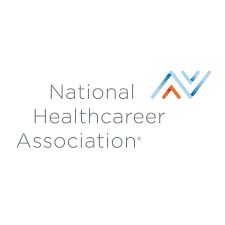The New Roles
Pharmacy technicians are taking on new roles at a rapid and exciting pace to keep up with evolutions in emerging practice and payment models for community pharmacies. Each year we update the list of emerging roles in the pharmacy and there are some interesting additions:
- Health coaches help with adherence, making appointments, and triaging needs.
- Immunizers administer vaccines.
- Medication synchronization coordinators lead workflow and personnel to ensure efficient and effective processes.
- Billing coordinators lead, organize, and troubleshoot non–product-based claims.
- Patient outreach coordinators mine pharmacy data for care gaps and coordinate outreach efforts.
- Health and wellness screeners use health risk assessments, patient health questionnaire instruments for depression, blood pressure readings for hypertension, and the Asthma Control Test and computer-aided detection tools for respiratory diseases.
- (New) Continuous quality improvement leads use reports from workflow such as time-in- motion and other metrics of pharmacy filling and clinical services efficiency and effectiveness to optimize care delivery and reduce wasted energy to increase margin.
- (New) Below-cost reimbursement and inventory management leads are responsible for tracking, authorizing, and transferring below-cost prescriptions to other pharmacies, or coordinating patient assistance programs as an alternative.
- (New) Social determinants of health leads (also called community health workers) coordinate activities meant to screen, address, and refer patients with socioeconomic, behavioral, or environmental needs such as transportation, food security, and a safe home environment.
The New Services
Editor's Note
If the situation described in this article seems foreign, confusing, unavailable, or not allowed at your pharmacy, find a new pharmacy at which to work. There are plenty of openings and opportunities at pharmacies that do see the future of pharmacy technicians and are starting to implement those necessary changes.
Nearly half of all states now have some sort of pharmacist provider status or ability to bill independently or in coordination with a care team member for services. Some of these emerging services include smoking cessation, diabetes management, closing gaps in care, screenings for conditions like hypertension, conducting evaluations and ordering oral contraceptives, and even broad-based ability to bill for any encounter that falls within a pharmacist’s scope of practice. All these responsibilities necessitate teammates to tend to not only the dispensing operations but also ancillary non-dispensing operations and management.
The New Teammates
In addition to technician evolution, we are starting to see new types of teammates join the pharmacy team. Nurses, nutritionists, social workers, and other allied health care professionals and non-licensed staff, such as cashiers made into service-line engagement experts, are moving into pharmacies.
Have You Been To An Ophthalmologist Lately?
If you have, you might have experienced the future of pharmacy, albeit with a different setting of care, a different set of services, and a different set of staff roles, but with a “top of license and capability” mind-set, culture, and strategy. You will likely see at least 5 professionals and paraprofessionals when getting screened for procedures like laser in situ keratomileusis or cataract surgery, prior to a 2- to 3-minute visit with the physician-surgeon. It is a high-quality, cost-effective, and economically sustainable strategy for providers that other health care professions and settings of care are likely to adopt. And that model is not possible without you, all the non-pharmacist site-of-care supports.
About the Author
Troy Trygstad, PharmD, PhD, MBA, is the executive director of CPESN USA, a clinically integrated network of more than 3500 participating pharmacies. He received his PharmD and MBA degrees from Drake University in Des Moines, Iowa, and a PhD in pharmaceutical outcomes and policy from the University of North Carolina. He has recently served on the board of directors for the Pharmacy Quality Alliance and the American Pharmacists Association Foundation.















































































































































































































